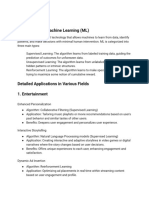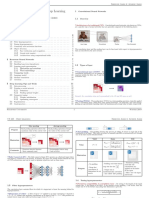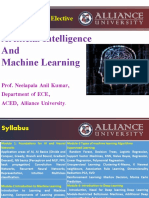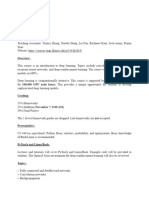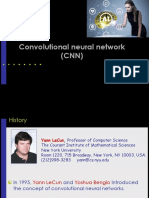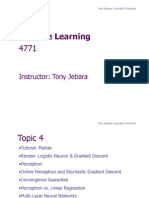0% found this document useful (0 votes)
11 views12 pagesNotes From Training
The document provides an overview of various machine learning techniques, including supervised, unsupervised, and reinforcement learning, along with their workflows and algorithms. It details deep learning concepts, architectures, and specific use cases for different types of neural networks, such as CNNs and RNNs. Additionally, it discusses generative AI models and their applications in natural language processing.
Uploaded by
MuhammadCopyright
© © All Rights Reserved
We take content rights seriously. If you suspect this is your content, claim it here.
Available Formats
Download as DOCX, PDF, TXT or read online on Scribd
0% found this document useful (0 votes)
11 views12 pagesNotes From Training
The document provides an overview of various machine learning techniques, including supervised, unsupervised, and reinforcement learning, along with their workflows and algorithms. It details deep learning concepts, architectures, and specific use cases for different types of neural networks, such as CNNs and RNNs. Additionally, it discusses generative AI models and their applications in natural language processing.
Uploaded by
MuhammadCopyright
© © All Rights Reserved
We take content rights seriously. If you suspect this is your content, claim it here.
Available Formats
Download as DOCX, PDF, TXT or read online on Scribd
/ 12











































